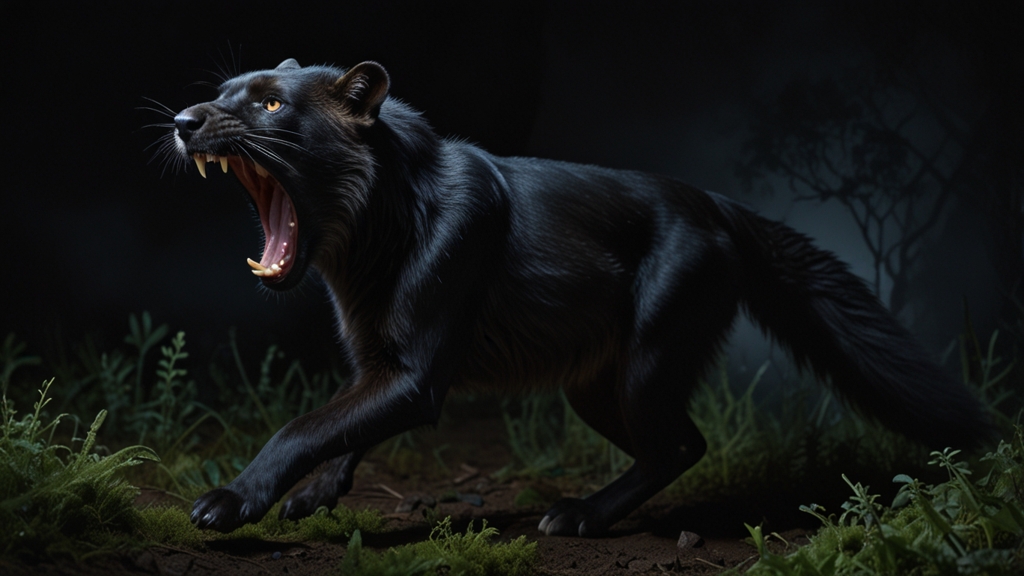Mammals of the Night: Creatures That Thrive in Darkness
The blanket of night ushers in a world that teems with life, much of which goes unseen by the majority of daytime dwellers. Night-time reveals a hidden ecosystem dominated by mammals uniquely adapted to low-light conditions. From the denizens of tropical forests to the wanderers of arid deserts, these creatures thrive when the sun sets. This article explores some of these fascinating nocturnal mammals, their adaptations, and the roles they play in their ecosystems.
The Masters of Echolocation: Bats
When discussing nocturnal mammals, it is impossible to overlook bats. As the only true flying mammals, bats have evolved sophisticated echolocation abilities that allow them to navigate and hunt in complete darkness. They emit high-frequency sounds that bounce off objects, returning echoes that their sensitive ears interpret to form a mental map of their surroundings.
“Bats are nature's marvels. Their echolocation is so precise that they can detect objects as fine as a human hair.”
Bats play crucial roles in various ecosystems. They help in pollination and seed dispersal, particularly in tropical regions. Additionally, insectivorous bats control pest populations, contributing to agricultural health and reducing the need for chemical pesticides.
The Silent Stalkers: Owls
Though not mammals themselves, owls deserve a mention due to their nocturnal behaviors that overlap with many night-time mammals. These silent predators hunt rodents and other small mammals, maintaining a balance in the population of these creatures. Owl adaptations, such as excellent night vision and silent wing beats, make them formidable nocturnal hunters.
Mammals like the diminutive and quick-footed rodents often find themselves on the menu. Rodents have developed their own adaptations to evade these predators. Enhanced senses of smell and hearing, combined with rapid breeding, help them maintain their populations despite the nightly predation.
Desert Dwellers: Kangaroo Rats
Kangaroo rats, native to the arid deserts of North America, showcase remarkable adaptations for nocturnal life. They have large eyes optimized for low light conditions, allowing them to forage at night while avoiding daytime heat and predators. These small mammals rarely drink water, instead metabolizing moisture from the seeds they eat.
“Kangaroo rats are a testament to evolutionary ingenuity. Their ability to thrive without direct water intake is an extraordinary adaptation to their harsh environment.”
Another fascinating adaptation is their saltatorial locomotion, which allows them to jump great distances quickly, escaping predators with agility and speed. Their nocturnal foraging plays a critical role in seed dispersal, aiding in the maintenance of their fragile ecosystems.
Forest Phantoms: Ocelots
In the dense forests of Central and South America, the elusive ocelot prowls under the canopy of night. These small wild cats are adept hunters, with keen night vision and a stealthy approach that make them lethal predators of small mammals, birds, and reptiles.
Ocelots contribute to the balance of their ecosystems by keeping rodent and bird populations in check. Their beautiful, dappled coats provide camouflage in the moonlit underbrush, enhancing their ability to move unseen through their territories.
“The ocelot's striking appearance and nocturnal behavior make it a fascinating subject for wildlife enthusiasts and researchers alike.”
Conclusion
The world of nocturnal mammals is a testament to nature's adaptability and diversity. These creatures have evolved a range of specialized features that enable them to thrive in the darkness, playing vital and often understated roles in their ecosystems. By understanding and appreciating these night-time dwellers, we gain a greater insight into the intricacies of the natural world and the importance of conserving habitats for all creatures, whether they bask in daylight or flourish in the shadows.








